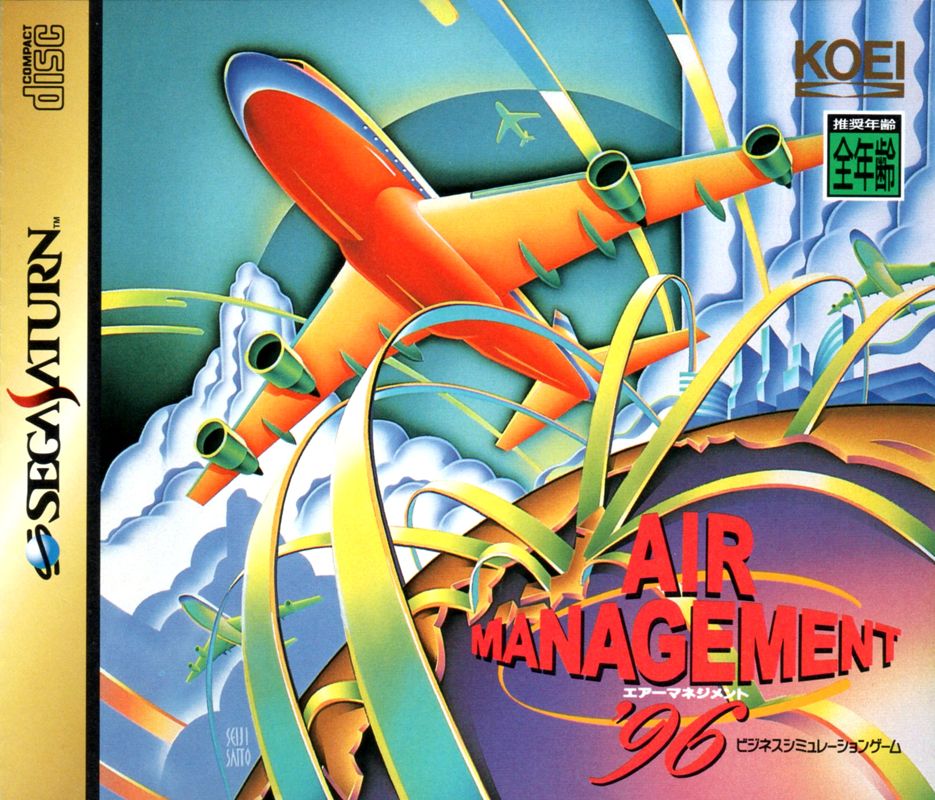Retro Replay Review
Gameplay
Air Management ’96 places you firmly in the captain’s chair of your own fledgling airline. From the moment you name your carrier, design its tail logo, and choose a home airport, you’re tasked with the strategic decisions that will define your success. Unlike real-time management sims, this title uses a turn-based system where each airline executes its moves in sequence, lending a deliberate pace that encourages careful planning rather than frantic micromanagement.
The core loop revolves around assigning one of four board members to key tasks: negotiating aircraft purchases, bidding for valuable airport slots, acquiring on-site facilities, or launching region-specific marketing campaigns. Each assignment carries a different time cost, so prioritizing critical actions becomes a puzzle in itself. Do you invest early in a wide-body jet to dominate a transcontinental route, or focus on aggressive marketing in Asia’s burgeoning markets? Your choices ripple across the global aviation landscape.
Once your fleet is established, route planning adds another layer of depth. You select origin and destination airports—slots permitting—and determine flight frequency, aircraft allocation, passenger capacity, and ticket pricing. Striking the right balance between load factor and profitability is essential. Overprice your tickets and watch planes fly empty; undercut the competition too severely and profit margins vanish. This push-pull tension provides many of the game’s most satisfying “aha” moments.
Scenarios span two distinct eras, each with its own market dynamics and geopolitical quirks. Whether you’re navigating the deregulation frenzy of the early 1990s or the more stable environment of the mid-’90s, adapting your strategy to shifting demands keeps the experience fresh. The competition ends when any airline amasses the pre-set financial target, injecting a clear objective that heightens each decision’s weight.
Graphics
Air Management ’96 marks the series’ first full foray into 3D visuals, updating its traditionally sprite-based interface with polygonal models and dynamic camera angles. Airport layouts are rendered in modest detail, showcasing terminal buildings, taxiways, and runways that shift perspective as you zoom and pan across the global map. While not cutting-edge by modern standards, the stylized aesthetic maintains clarity and readability—crucial in a game brimming with data.
The user interface overlays are crisp and intuitive. Contextual menus slide in and out of view, offering quick access to route statistics, financial reports, and market intelligence. Tooltips provide background on aircraft performance and regional demographics, reducing the need to consult external guides. Animations—such as jets taxiing and taking off—help break up the tedium of spreadsheets, reminding you that this is still about air travel, not just numbers.
Color palettes are sensible and consistent, with distinct hues for different continents and market segments. The world map’s slight curvature and 3D markers for major airports give a sense of scale that feels more immersive than prior entries. Even if you mute the ambient crowd noises and terminal announcements, the visual feedback remains engaging enough to sustain marathon play sessions.
Story
While Air Management ’96 doesn’t feature a narrative-driven campaign or cutscenes, its two scenarios convey a subtle sense of progression through real-world aviation history. Players witness the rapid expansion of low-cost carriers in one era and the consolidation of legacy airlines in another. This backdrop provides a narrative texture that softly frames your strategic choices.
Board members also carry personality traits—some excel at securing favorable lease terms, others shine in public relations—introducing light character drama into the boardroom. Their briefings hint at industry headlines: a major competitor’s scandal, shifting fuel prices, or a regional economic boom. These textual vignettes inject personality without derailing the simulation’s core focus.
International events such as trade agreements, economic recessions, and even airline alliances play out through scenario-specific modifiers. These subtle shifts can upend carefully laid plans, mimicking the unpredictable nature of real-world aviation. Though you won’t find a hero’s journey or scripted plot twists, the evolving market context delivers emergent storytelling driven by your strategic choices.
Overall Experience
Air Management ’96 strikes a fine balance between accessibility and depth, offering newcomers a well-signposted entry into airline simulations while still rewarding veterans with its intricate decision web. The turn-based approach eliminates the stress of real-time crises, giving you room to think several moves ahead as you jockey for airport slots and negotiate bilateral agreements.
The revamped 3D presentation modernizes the series without sacrificing the clarity required for high-level management. Data remains front and center, but tasteful visuals and smooth transitions make the numbers easier on the eyes. Combined with responsive UI controls and robust in-game help, the experience feels polished and user-friendly.
Though lacking a traditional storyline, the game’s scenario-driven progression and dynamic market events ensure that no two playthroughs feel identical. The four-board-member mechanic adds a strategic layer that elevates the game beyond simple route juggling—choosing who tackles which task becomes as important as the task itself.
For anyone intrigued by economic sims or fascinated by the airline industry, Air Management ’96 offers a rich, engaging sandbox. Its deliberate pace, extensive customization options, and historical context make it a compelling choice for long-term play, whether you’re a seasoned strategist or a curious newcomer ready to launch your own global carrier.
 Retro Replay Retro Replay gaming reviews, news, emulation, geek stuff and more!
Retro Replay Retro Replay gaming reviews, news, emulation, geek stuff and more!




Reviews
There are no reviews yet.